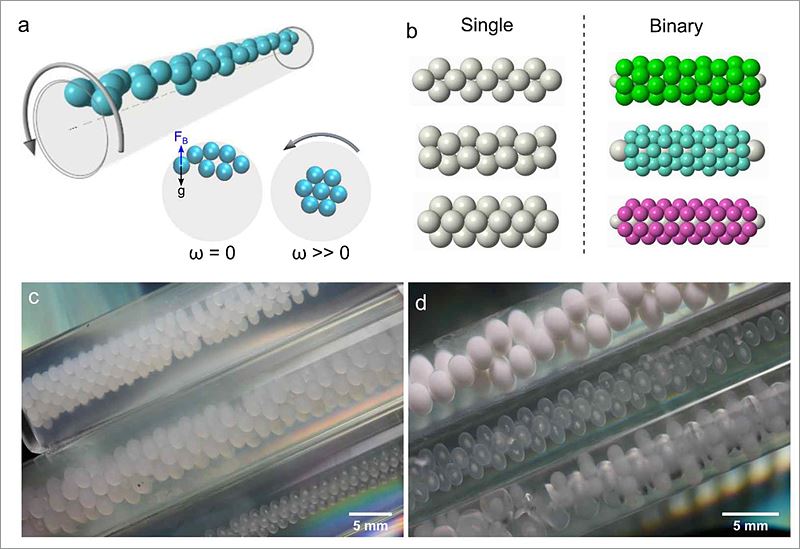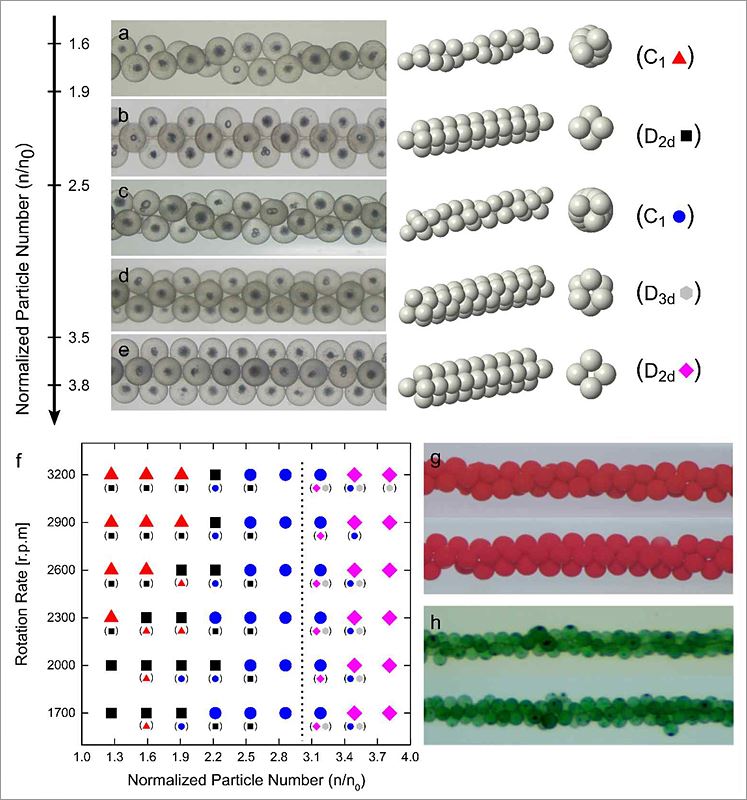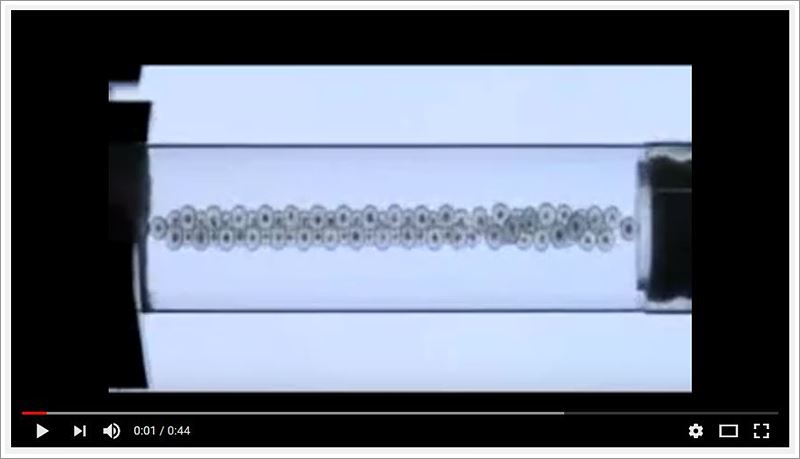| Title of announcement | Spinning Cylinders to Recreate Nature’s Patterns | ||||
|---|---|---|---|---|---|
| Business forms | Y | Expiration date for bidding | |||
| Department in charge | 전체관리자 | Registration Date | 2017-11-16 | Hits | 3952 |
| att. | |||||
|
|
|||||
Spinning Cylinders to Recreate Nature’s Patterns- New method to create dynamic tubular structures, inspired by leaves around a stem, scales on pine cone, and viruses’ tails - Some of nature’s most exquisite patterns; leaves around a plant’s stem, scales on a pine cone, and the tail of some viruses, consist of small objects decorating a cylindrical chassis with a specific pattern. Nature’s preferred method of building is through self-assembly, the process in which individual components autonomously and spontaneously organize into ordered structures. Taking inspiration from nature, scientists at the Center for Soft and Living Matter, within the Institute for Basic Science (IBS, South Korea), found the conditions necessary for dynamically building large structures from small objects within spun cylinders. While nature offers us beautiful examples of patterns, such as strands of DNA, recreating the same tubular structures in the laboratory has been difficult, especially if two or more kinds of particles are used together. The researchers devised a method to compact various particles or the shape of bubbles within a cylinder by exploiting the centripetal force of a rotating fluid. Due to this force, higher density fluid is pushed out while lower density material is driven to the center. As the denser (heavier) liquid rotates, the lighter particles within the cylinder arrange in a tubular assembly. Previous tubular assemblies have been studied in a completely different way, such as stamping frames. Creating tubular crystals under non-equilibrium conditions of a rotating frame of reference is a conceptually new attempt at their self-assembly. By using this method, it is possible to make tubular crystals out of two kinds of particles, which had not been made before.
The first author, Lee Tae-hoon, a graduate student, said, "This study can be extended to various systems, including soft entities, such as bubbles or maybe even living cells." It is believed that this work will contribute to the creation of various shapes of microcomposites in which the particles could reach colloidal dimensions, making these structures useful in, for example, photonics applications.
Conducting this kind of experiment has traditionally had to deal with issues caused by gravity. When gravity is present, sedimentation occurs, which has led some research conducted on the International Space Station where gravity is removed from the equation. “What we managed to do by using rotating liquids is to effectively switch off the gravity because we beat it against the buoyant force. Gravity is always there, but we introduced a force which exactly matches it. In some sense, we are able to do an experiment on Earth that would normally require outer space, zero gravity conditions.” explains Bartosz Grzybowski, who led the study.
Now that the scientists are able to control groups of particles using rotation, they will focus on controlling individual particles. It is possible to move a single particle in a 3D space using lasers (optical tweezers) or magnets (magnetic traps) but both methods require bulky facilities. Bartosz Grzybowski explains: “If you want to catch a particle and move it to a desired location in 3D it usually requires quite a lot of equipment. But now we know how to manipulate small objects by fluid flows in a rotating frame of reference, how to manipulate particles in 3D, and actually position them as if with a pair of tweezers, although we don’t have any tweezers.” In addition to studying the effects on solid particles, their bubble shape studies are leading to experiments on increasingly smaller units; cells. The ability to gently apply forces to soft objects could potentially lead to controlling the function of cells while still keeping these cells alive. Richard Moore Notes for editors - References - Media Contact - About the Institute for Basic Science (IBS) |
|||||


